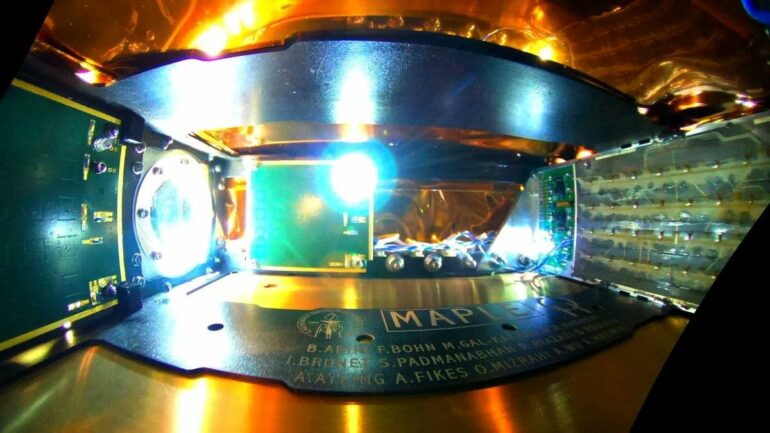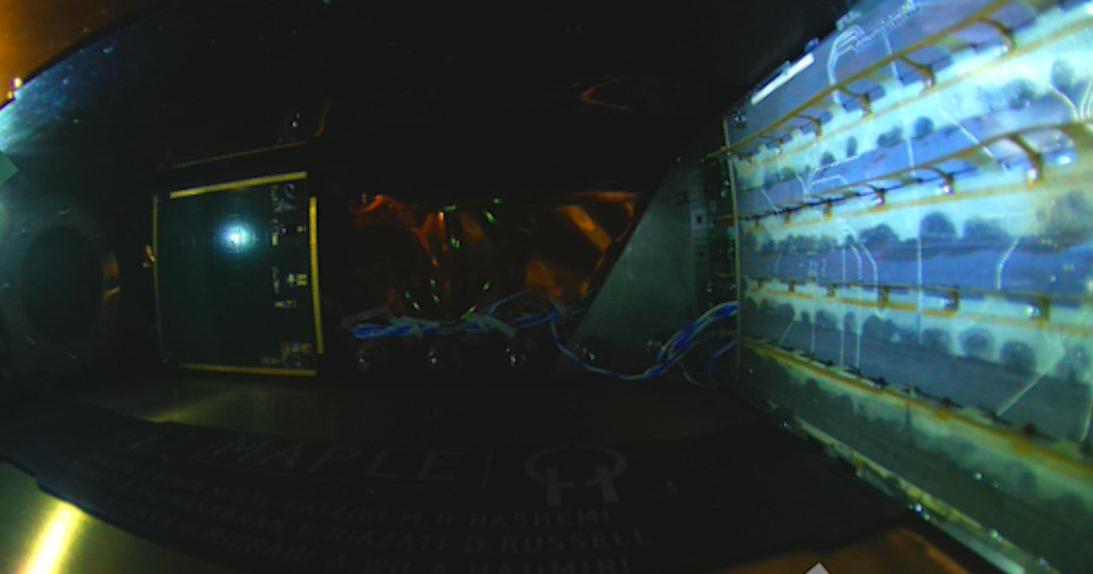The concept of harnessing solar energy from space has been a longstanding aspiration for scientists, and now, after over half a century, a significant breakthrough has been achieved. A team of researchers from the California Institute of Technology (Caltech) has announced the success of their pioneering experiment, marking the first demonstration of wireless energy transfer in space. The experiment, conducted using the Space Solar Power Demonstrator (SSPD-1), involved collecting sunlight, converting it into electricity, and transmitting it via microwaves to rooftop receivers at Caltech’s Pasadena campus.
The groundbreaking achievement, which occurred on Thursday, confirms the viability of the setup that was launched on January 3. The experiment also underscores the resilience of the system in withstanding the challenges posed by the harsh space environment. Dr. Ali Hajimiri, co-director of Caltech’s Space Solar Power Project (SSPP) and a professor of electrical engineering and medical engineering, expressed his enthusiasm about the team’s accomplishment. “To the best of our knowledge, no one has ever demonstrated wireless energy transfer in space even with expensive rigid structures. We are doing it with flexible lightweight structures and with our own integrated circuits. This is a first,” he stated in a press release.
The research project, known as the Microwave Array for Power-transfer Low-orbit Experiment (MAPLE), is one of three ongoing initiatives conducted on board the SSPD-1. The effort involved the utilization of two separate receiver arrays and lightweight microwave transmitters equipped with custom chips. Caltech’s team further emphasized that the design of the transmission setup aimed to minimize fuel requirements for space travel and necessitated flexibility to enable folding the transmitters onto a rocket.
Space-based solar power has long captivated the scientific community as an ambitious goal. While currently costly, this technology holds the promise of virtually limitless renewable energy. Solar panels deployed in space can gather sunlight without any limitations imposed by the time of day, providing an uninterrupted energy source. Moreover, the utilization of microwaves for power transmission eliminates interference from cloud cover, making it a highly efficient solution.
Caltech’s Space Solar Power Project (SSPP) is not the sole endeavor dedicated to realizing the potential of space-based solar power. In a public-private partnership announced a few days before Caltech’s breakthrough, Japan’s space agency, JAXA, revealed plans to transmit solar power from space by 2025. The project leader, a professor from Kyoto University, has been exploring space-based solar power since 2009. In 2015, JAXA achieved its own significant milestone when scientists transmitted 1.8 kilowatts of power—equivalent to powering an electric kettle—over a distance of more than 50 meters to a wireless receiver.
Founded in 2011, the Space Solar Power Project at Caltech encompasses multiple experiments, including MAPLE. In addition to proving the efficacy of different cell types in surviving the rigors of space, the SSPD-1 is also conducting the Deployable on-Orbit ultraLight Composite Experiment (DOLCE). This experiment involves a six-by-six feet structure that showcases the architecture, packaging scheme, and deployment mechanisms of a modular spacecraft, although it has yet to be deployed.
The success of Caltech’s experiment marks a significant milestone in the pursuit of space-based solar power. As researchers continue to overcome challenges and refine the technology, the day when clean, renewable energy from space becomes a reality draws closer. The implications of this breakthrough extend far beyond the confines of Earth, offering a glimpse into a future powered by the sun’s abundant energy resources.


